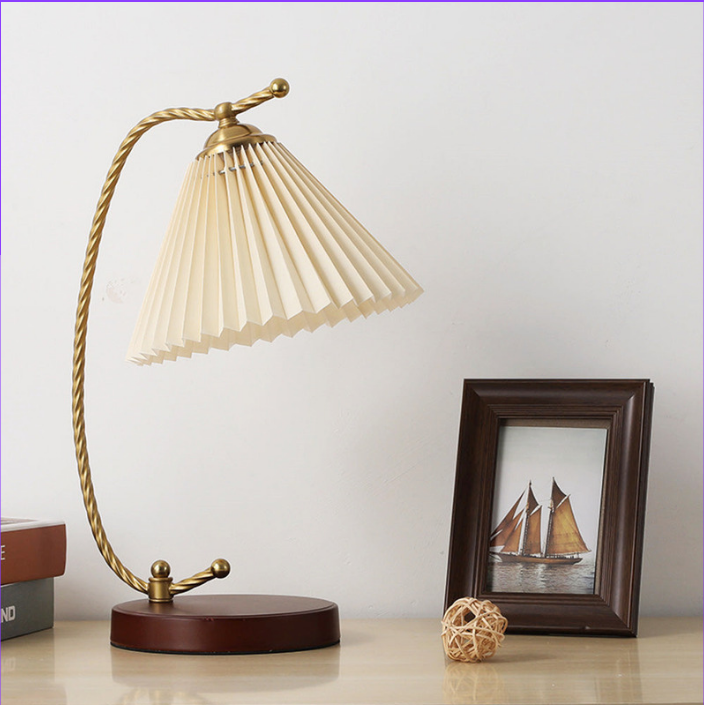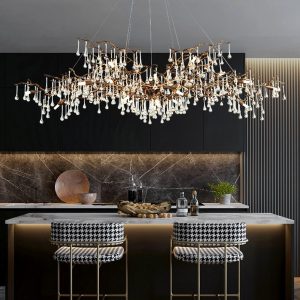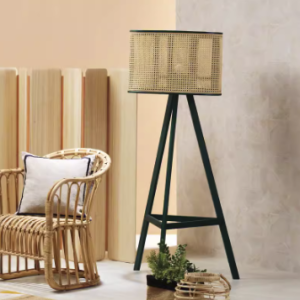
Exploring Danish Art Table Lamp Designs
Danish art table lamp designs have a significant history dating back to the early 20th century. The Danish design movement emerged as a response to industrialization, emphasizing craftsmanship, simplicity, and functionality. These principles formed the basis for Danish art table lamp designs, which are known for their clean lines, organic shapes, and use of natural materials.
The mid-century modern era, spanning roughly from the 1940s to the 1960s, was particularly influential in the development of Danish art table lamp designs. Notable designers of this period include Poul Henningsen, Arne Jacobsen, and Verner Panton, who were renowned for their innovative use of materials and creation of enduring designs that remain popular today. This era also saw a shift towards mass production, making Danish art table lamps more widely available.Jornoshop
In recent decades, Danish art table lamp designs have continued to evolve. Contemporary designers have reinterpreted traditional techniques and materials, resulting in a wide range of styles from minimalist to avant-garde. Danish art table lamps have become globally recognized for their quality craftsmanship and timeless elegance, establishing themselves as important elements in interior design worldwide.
Influential Danish Artists and their Contribution to Lamp Design
Poul Henningsen: The Pioneer of Soft Lighting
One such influential artist is Poul Henningsen, whose iconic PH lamp series revolutionized the way light is diffused and distributed. Henningsen’s use of layered shades and reflective surfaces created a soft, glare-free light that has become a hallmark of Danish art table lamp designs.
Arne Jacobsen: The Master of Minimalism
Another influential figure in Danish lamp design is Arne Jacobsen, whose work is characterized by its sleek, minimalist aesthetic. Jacobsen’s AJ table lamp is a prime example of his design philosophy, with its simple yet striking silhouette and use of high-quality materials. Jacobsen’s designs have had a lasting impact on the industry, inspiring countless designers to create their own modern interpretations of Danish art table lamp designs.
Verner Panton: The Visionary of Vibrant Design
Verner Panton is another Danish artist who has left a lasting impression on lamp design. Panton’s use of vibrant colors and unconventional shapes pushed the boundaries of traditional design, resulting in iconic pieces such as the Flowerpot lamp. Panton’s bold and playful approach to lamp design has made a significant impact on the industry, inspiring designers to think outside the box and create truly unique Danish art table lamp designs.
The Characteristics of Danish Art Table Lamp Designs
Danish art table lamp designs are characterized by their timeless elegance, attention to detail, and emphasis on functionality. These designs often feature clean lines, organic forms, and a minimalist aesthetic that is both understated and sophisticated. Danish art table lamp designs are known for their use of high-quality materials such as wood, metal, and glass, which are carefully crafted to create pieces that are both visually stunning and durable.
One of the defining characteristics of Danish art table lamp designs is their focus on creating a warm and inviting atmosphere. These designs often incorporate diffused lighting techniques that create a soft, ambient glow, making them ideal for creating a cozy and welcoming environment. Danish art table lamp designs are also known for their versatility, with many pieces featuring adjustable elements that allow for customizable lighting options.
Another key characteristic of Danish art table lamp designs is their commitment to sustainability and environmental responsibility. Many designers prioritize using eco-friendly materials and production methods, resulting in pieces that are not only beautiful but also environmentally conscious. This dedication to sustainability has made Danish art table lamp designs increasingly popular among consumers who are seeking out ethical and environmentally friendly products for their homes.
The Materials and Techniques Used in Danish Art Table Lamp Designs
Danish art table lamp designs are known for their use of high-quality materials and traditional craftsmanship techniques. Wood is a popular choice for many Danish art table lamp designs, with designers often opting for rich, warm tones such as teak or oak. Metal is another commonly used material, with brass and steel being favored for their durability and timeless appeal.
Glass is also frequently used in Danish art table lamp designs, adding a touch of elegance and sophistication to the finished piece. In terms of techniques, Danish art table lamp designs often incorporate traditional craftsmanship methods such as hand-turning, hand-carving, and hand-finishing. These techniques require a high level of skill and precision, resulting in pieces that are truly one-of-a-kind.
Many designers also prioritize sustainable production methods, such as using locally sourced materials and supporting ethical labor practices. In recent years, there has been a growing trend towards incorporating modern technology into Danish art table lamp designs. This includes the use of energy-efficient LED lighting and smart technology that allows for customizable lighting options.
By combining traditional craftsmanship with modern innovation, designers are able to create Danish art table lamp designs that are not only visually stunning but also practical and sustainable.
The Role of Danish Art Table Lamp Designs in Interior Design
Danish art table lamp designs play a crucial role in interior design, adding a touch of elegance and sophistication to any space. These designs are highly versatile, able to complement a wide range of interior styles from minimalist and contemporary to traditional and eclectic. Danish art table lamp designs are often used as focal points within a room, drawing attention to their timeless beauty and craftsmanship.
One of the key roles of Danish art table lamp designs in interior design is their ability to create a warm and inviting atmosphere. These designs often incorporate diffused lighting techniques that create a soft, ambient glow, making them ideal for creating a cozy and welcoming environment. Danish art table lamp designs can also be used to highlight specific areas within a room, such as a reading nook or a dining area, adding both functionality and visual interest to the space.
Another important role of Danish art table lamp designs in interior design is their ability to elevate the overall aesthetic of a room. These designs are often considered works of art in their own right, adding a sense of sophistication and refinement to any space. Whether used as standalone pieces or as part of a larger lighting scheme, Danish art table lamp designs have the power to transform the look and feel of a room, creating a sense of harmony and balance.
Popular Danish Art Table Lamp Designs and Their Cultural Significance
The PH Lamp Series: A Revolution in Lighting
The PH lamp series by Poul Henningsen has become an iconic representation of Danish design, renowned for its innovative approach to light diffusion and distribution. This timeless design is admired for its elegance and has become a symbol of Danish design excellence.
The AJ Table Lamp: A Masterclass in Minimalism
Arne Jacobsen’s AJ table lamp is a celebrated example of modernist design, characterized by its sleek silhouette and minimalist aesthetic. This design has had a profound cultural impact, influencing designers worldwide and becoming a staple in interior design.
The Flowerpot Lamp: A Pop Culture Icon
Verner Panton’s Flowerpot lamp is a vibrant and playful design that has become synonymous with 1960s pop culture. This iconic lamp reflects Panton’s bold and unconventional approach to lighting, making it a standout piece in any interior space.
The Future of Danish Art Table Lamp Designs and Their Global Impact
The future of Danish art table lamp designs looks bright, with designers continuing to push the boundaries of traditional craftsmanship and innovation. There is a growing emphasis on sustainability and environmental responsibility within the industry, with many designers prioritizing eco-friendly materials and production methods. This commitment to sustainability will likely have a positive global impact, as consumers increasingly seek out ethical and environmentally friendly products for their homes.
Another trend that is shaping the future of Danish art table lamp designs is the integration of modern technology into traditional craftsmanship. Designers are increasingly incorporating energy-efficient LED lighting and smart technology into their designs, allowing for customizable lighting options that are both practical and sustainable. This fusion of old-world craftsmanship with modern innovation has the potential to make Danish art table lamp designs even more relevant on a global scale.
As Danish art table lamp designs continue to gain popularity around the world, they have the potential to shape the future of interior design on a global scale. These designs are celebrated for their timeless elegance, versatility, and commitment to sustainability, making them an attractive choice for consumers who value quality craftsmanship and ethical production practices. With their rich history and ongoing innovation, Danish art table lamp designs are poised to make a lasting impact on the global design landscape for years to come.


